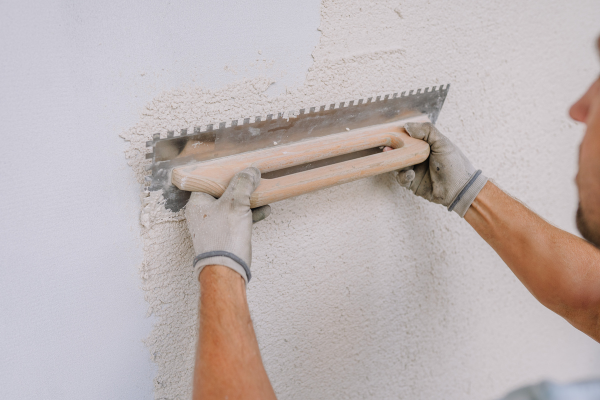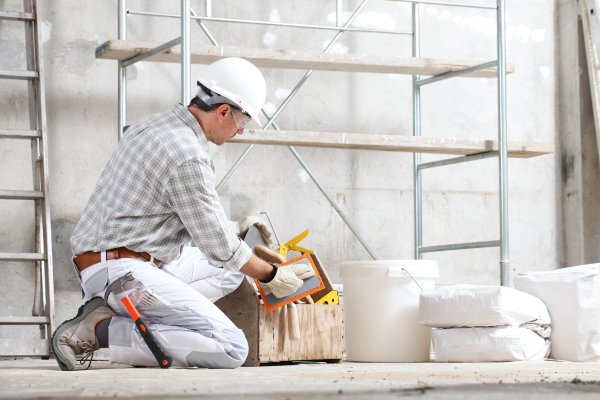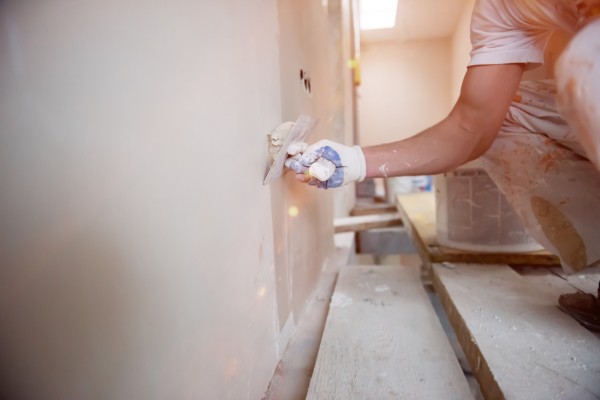NVQ Level 2 Plastering: Is It Hard?
For a professional who’s already working as a plasterer, the NVQ Level 2 Plastering is demanding, but entirely achievable. In today’s blog, we’ll break down the format of the assessment, and clarify why your existing experience is the greatest factor in determining how “hard” the qualification might feel.

The Core Challenge: Proving Consistency
The NVQ is a competence-based qualification, meaning the assessment focuses entirely on what you can do in the real world. The core challenge isn’t learning a new skill, but proving your existing skill is consistently up to the national standard.
Your assessor is looking for evidence that you can reliably perform essential tasks- like mixing materials, applying scratch coats, and achieving a smooth final skim- without defects, under pressure, and safely. If you’re already a skilled, working plasterer, the difficulty is simply in documenting that competence.
The Practical Assessment: Remote Observation
The assessment method for the NVQ is its most distinct feature. The assessor verifies your skills primarily through remote observation, and a review of your portfolio of evidence. This requires you to be actively working in the trade. For a working professional, the greatest difficulty often lies in coordinating the assessor’s observations with a job that aligns perfectly with a required unit (e.g., solid plastering internal walls or applying external render).

NVQ Level 2 Plastering: The Documentation Hurdle
The administrative side of the NVQ can pose a certain degree of difficulty for hands-on professionals. Success requires meticulous documentation. You need to compile a digital portfolio that includes photographs and videos of your work, detailed written accounts of the tasks you performed, and signed Witness Testimonies from supervisors or line managers which verify your competence. The challenge is organisational. You need to be proactive in capturing evidence, annotating it correctly (linking it to specific NVQ units), and maintaining a clean record of your projects. Without a well-structured and verified portfolio, even the most skilled plasterer can’t complete the qualification.
Timeframe: Why It’s Flexible, Not Fixed
The duration is highly flexible. It can take anywhere from four weeks to several months, depending on the candidate. This flexibility is key to its design, as it accommodates the unpredictable nature of construction work.
The speed of completion is dictated by how quickly you can generate and submit the necessary evidence. A candidate who communicates regularly with their assessor and ensures their work meets the required quality standards will move through the units much faster than someone who delays evidence submission or requires multiple attempts to meet the technical benchmarks.
Conclusion (NVQ Level 2 Plastering: Is It Hard?)
The Level 2 is a demanding, but not academically difficult, qualification. Its challenge stems from the requirement for consistent, professional-grade practical skill and the meticulous organisation of real-world evidence.
For an experienced plasterer, the NVQ is an efficient pathway to formal certification. For someone less experienced, it serves as a robust framework for professional skill development. By focusing on site safety, technical accuracy, and consistent evidence collection, any dedicated professional can achieve this vital qualification.

If you still have any questions regarding the NVQ, then do not hesitate to get in touch.
Phone – 020 3488 4472





